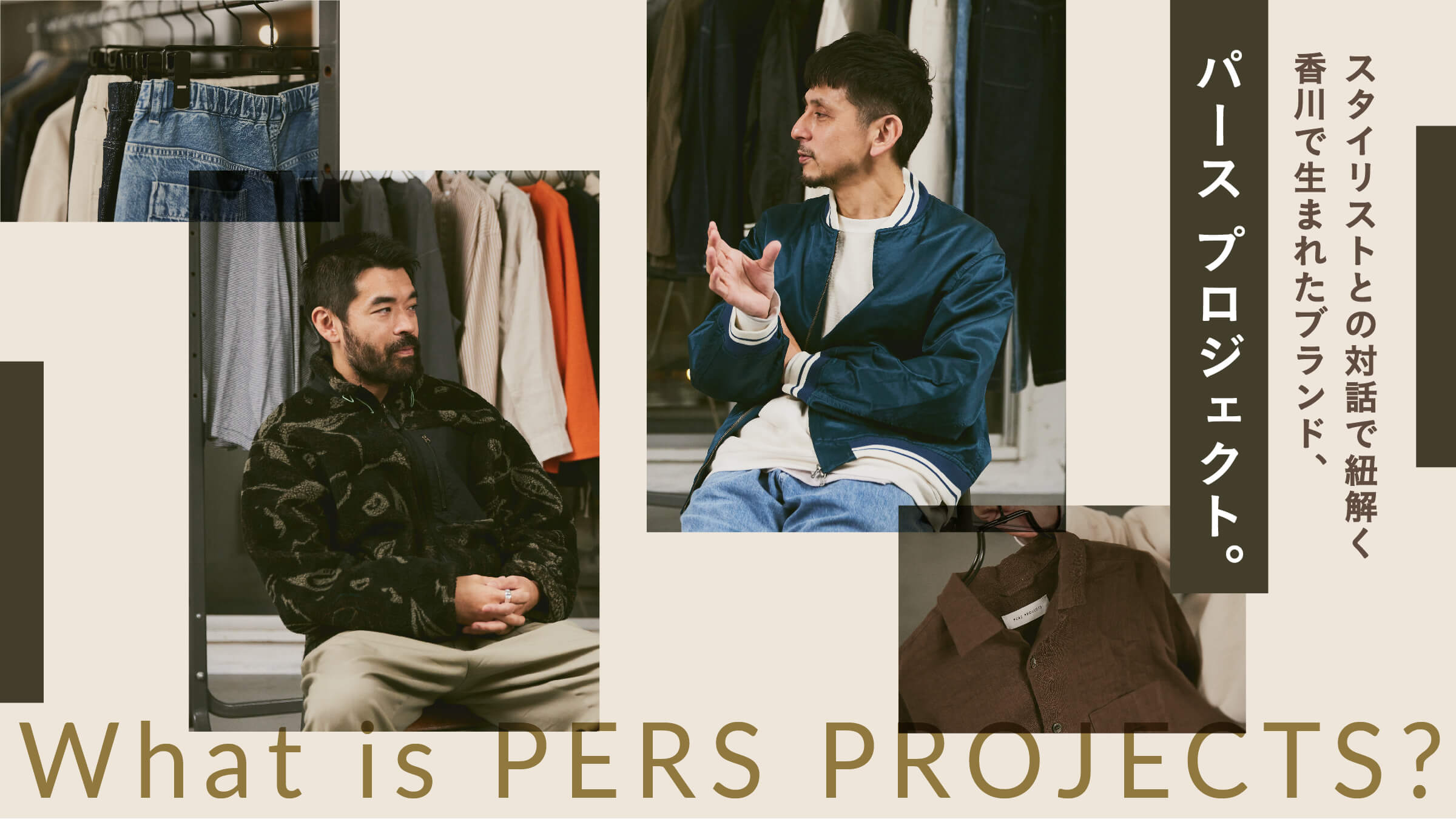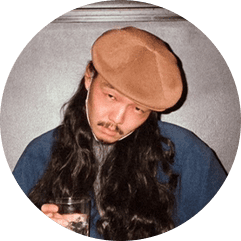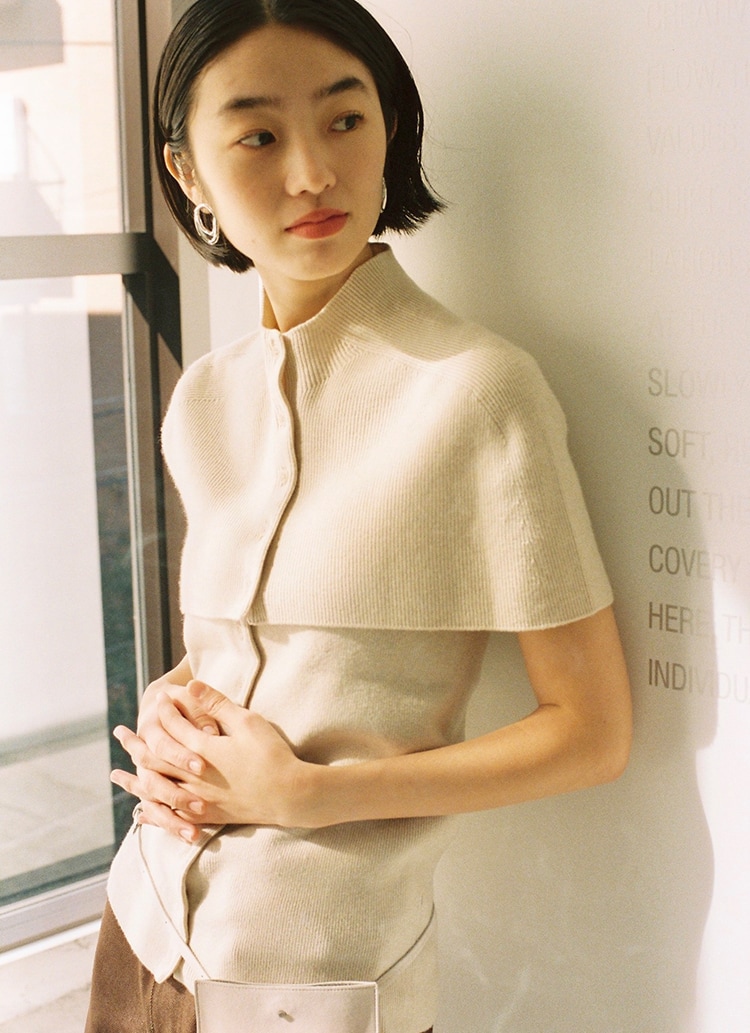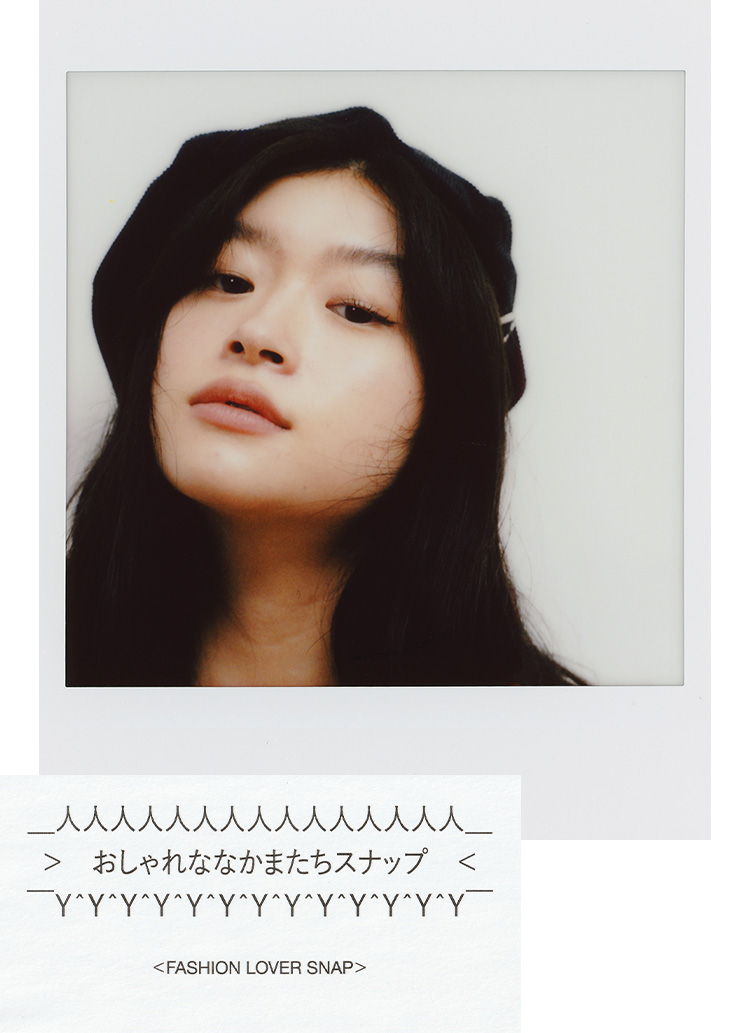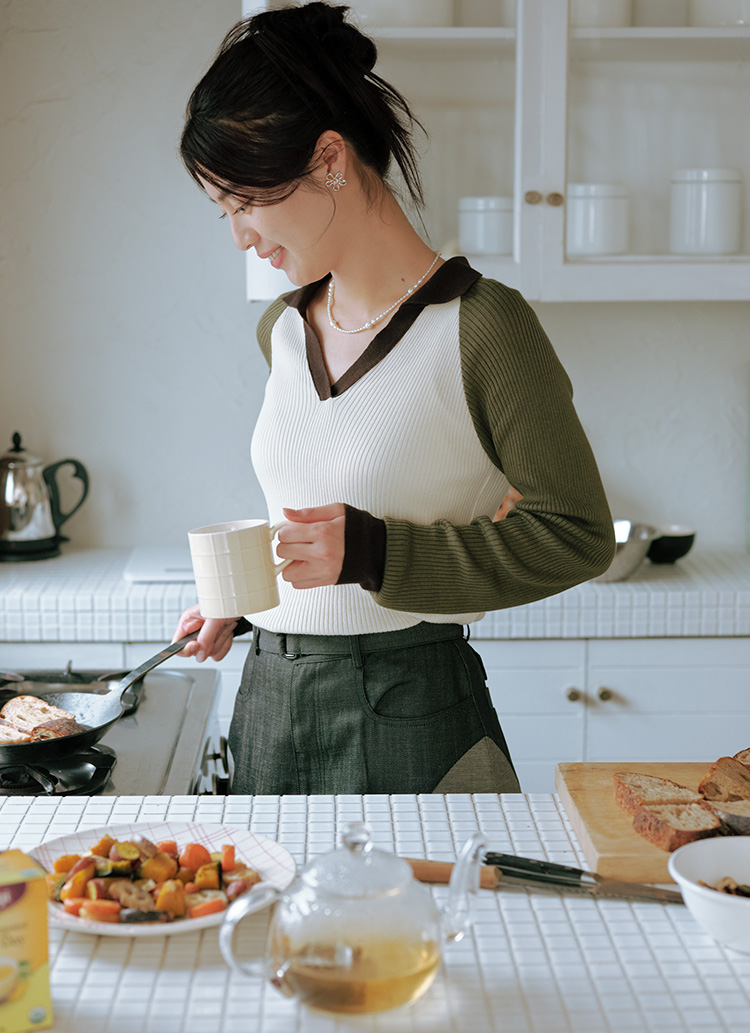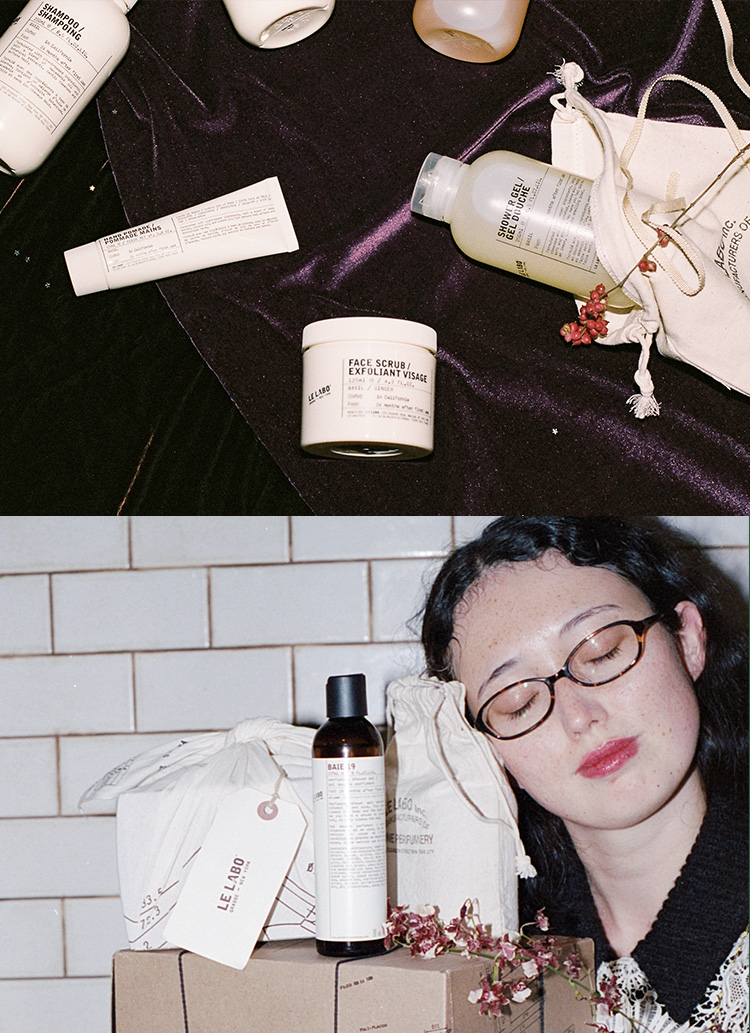A source of inspiration .
How do these items come about? We ask them about the moment when inspiration is born.
Ito: . I get inspired when I go abroad. I often see unexpected coordinates, such as "I didn't know you could wear those pants with this top. Before a season, I often base my outfits on the images I have in my mind.
Yagi: Do you have a theme for this season?
Ito: I have not set a specific theme for this project, but in this case, it is centered on the ska-jeans that I am currently wearing. I have never worn a ska-jean before, but the idea of how to combine the old, royal style of ska-jean and denim to make it modern and contemporary was derived from that, and then the idea of how to wear denim was born. Then, I thought of items to be made so that there would be an overall sense of unity.

Yagi: Do you go abroad often?
Ito: I haven't been able to go there since Corona, but I used to go there before that. When I was working at a boutique, I also went to America and Europe to buy clothes. I also went to Thailand to buy used clothes.
Mr. Ito says that he gets inspiration from casual scenes of daily life he sees overseas and styles that go beyond the expected. Mr. Yagi, nodding his head in agreement, was quick to incorporate football shirts into his styling.

Yagi: Football shirts have a different color scheme than regular clothes, don't they? I thought that if I incorporated them into my usual style, it would create a nice sense of discomfort. When I go to Europe and the U.S., I see people wearing the football shirts of the teams they support as their daily wear, and I find that kind of realism interesting and I like it. The person wearing it probably thinks it is fashionable and does not do so, but from a Japanese person's point of view, it may seem fashionable, and I may get scared at such times.
Ito: Such unconventional styles from overseas are interesting, aren't they? Did you develop this sense during your time in New York?
Yagi: . Maybe I was looking at them unconsciously. Conversely, what kind of people in Kagawa Prefecture inspire you? . I wonder what kind of moments make you think, "Oh, this person is stylish.

. Since the scajan makes a strong statement, I chose a border T and raw denim for the rest of the outfit, and I paired it with chic moccasins on my feet. The border T has a thin pitch and is not too sharp, so it blends in well with my outerwear.
Ito: There are people who never change their clothes. I have a senior colleague who wears a leather jacket all year round. I admire such people and think they are cool.
Yagi: People who have their own style are cool.
Ito: I think such people are cool, and I might be thinking about how I would wear them. That is the seed of how I make clothes. The starting point is to think about how it would be interesting to modernize it. If I were to wear it now, I would think it would be better to make it less glossy and shiny, or what kind of fabric would be best.


This is a fine-pitched piece of clothing also known as a "daphne border. While jersey fabric is used, the side that would normally be on the inside is purposely made to be on the outside, resulting in a unique, fuzzy look and a smooth fit. The denim, on the other hand, is finished with one tuck to give a roomy waist and a beautiful straight silhouette that flows down to the hem.
Yagi: Perhaps there is a certain approach to design that can only be achieved by making products in Kagawa Prefecture. I have a strong impression of embroidered tigers and dragons on Sukajans, but the items you make are more like subtractions. I think that what he sees is different from Tokyo, and I wondered if that difference, in a positive sense, is expressed in his expression.
Ito: When I come to Tokyo, I can see some kind of trend, but in Kagawa Prefecture, there are no people who are that aware of it. Of course, I am aware of the current trends, but I am not influenced by them.
Yagi: You're either swept up in the trend , or you certainly are. You're looking at it from a good distance.

Yagi's interest in the items from the Perth Project, which may look ordinary but are anything but ordinary, is directed toward Kagawa Prefecture.
Yagi: Do you have any particular rules for making clothes?
Ito: I don't make things that I wouldn't wear myself. I want to continue to make things that I want to wear and want.
Yagi: . Maybe it's because I wear it myself that I want to pay attention to every detail.
Ito: Yes, as I wear it, I think about how I want to do this or that, or how I would like it to be more like this next year.
Yagi: For example, the linen shirts of this season are thin and light. Is the climate of Kagawa Prefecture also a factor? Is it hot in summer?
Ito: People say that summers in Kagawa Prefecture are hot.
Yagi: You say that when it is hot, long sleeves are cooler than short sleeves , on the contrary.
Ito: I'm not that aware of it, but some people say it's like the sun is hotter because there is less shade from buildings and such.
Yagi: Ah, so that's part of it . Also, since we live in a car-oriented society, I wonder if the fact that we are often exposed to air conditioning also has an effect. . Even in mid-summer, a light shirt like this is useful. The more one learns about the characteristics of Kagawa Prefecture, the more profound the clothing becomes.

By unraveling the environment and climate, a clear outline of the brand's image has emerged. If you were to make a special order for the "PURSE PROJECT," what kind of items would you order?
Yagi: I wonder . I would like you to make pullover shirts. I myself don't wear shirts very often, but I have a pullover shirt that I wear for personal wear, which is loose in width and looks good when tucked in. If you could make such a wide pullover shirt with this linen, I think you could make a very nice shirt with a nice, cozy feel.
Ito: Maybe a pullover shirt would be nice.
Yagi: Are there any items that you made but were not satisfied with?
Ito: Of course there are. . there are times when I've been obsessed with something from the fabric, but I've had to drop it for crying out loud.
Yagi: Craftsman. Which item was the most difficult to make this season?
Ito: Chemical-washed denim. Before making samples, I show them pictures and communicate with them through materials, but there are many things that are not known until the finished product is ready. I want to create a loose silhouette, so I use soft fabrics that are a little lighter in ounce and not too stuffy. However, it was difficult to use such fabrics in Kojima.

Yagi: Wow , you mean because there are so many rigid-like fabrics?
Ito: Yes, it was difficult to create softness, since this is a place where gun-studded denim is considered to be good. . Also, the chemical-like fading was difficult to achieve.
Yagi: This atmosphere is exquisite , isn't it? It's not wild, but it has a nostalgic feel to it. How did it come up at first?


The stonewashed finish reproduces the faded appearance of the color. While it has a chemical feel, it also has an urban mood. Like the raw denim, this pair has a straight silhouette with one tuck. The sweatshirt chosen for the top has a longer length and looser ribbing to recreate the form of vintage sweatshirts that look as if the elastic at the hem has been stretched out after wearing it for many years. Pockets on both sides are provided for ease of use.
Ito: It was like the 80's. . It was like "Back to the Future.
Yagi: Ahhh , I see (laughs).
Ito: I was not trying to recreate 80's chemical jeans, I just wanted that nuance, so I had a hard time conveying the subtle nuance. But I think I was able to express the faded look I had in mind because I could talk directly to the stylist. Stylists also have the task of conveying nuances, don't they?

. "Since the denim is so expressive, I kept the top simple. The fabric is soft, so it's easy to move around in, and the cushioning when it pools at the hem comes out beautifully."
Yagi: Yes, there is, and it's really difficult. We have to use proper nouns like "Back to the Future," as you mentioned earlier, or something like that, to bring our images closer to each other.
Ito: Do you also do something like capturing and expressing the characteristics of a product?
Yagi: It depends on the occasion, but if it is for a celebrity, I don't pay much attention to the details, and if it is for a sales visual, the details are more important. For denim, the impression will be very different if I shoot in Omotesando or in front of a private house, and I like the process of creating an image. I like the process of creating images. I shoot visuals based on the direction of the brand.

The two-hour conversation reached its climax. At the end, Mr. Ito asks Mr. Yagi, "If you were to hold a fashion shoot with the PURSE Project, in what kind of situation would you do it? Mr. Ito asked Mr. Yagi, "If you were to hold a fashion shoot with the PURSE Project, what kind of situation would you choose?
Yagi: . well, I would still like to go to Kagawa Prefecture (laughs). It also conveys the roots, and I think it would be cool to have a senior who always wears leather jackets, like you mentioned.
Ito: I would like to see what it would be like to do it in Kagawa Prefecture .
Yagi: I definitely want to serve udon (laughs). . If there is a cut where the model eats udon, I think it would probably be immediately recognizable as being from Kagawa Prefecture. It would be interesting to have a real person, such as the owner of an udon shop, wearing the clothes for the photo shoot. I think the clothes would look great no matter who wears them, so I think it would enhance their attractiveness.


